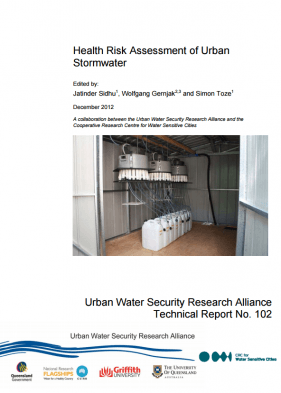Health Risk Assessment of Urban Stormwater
Abstract
Urban stormwater is a relatively untapped alternate water source in Australia, which could be used to augment non-potable and potable water supplies within cities. Elevated levels of chemical and microbial contaminants in the storm runoff, however, can negatively impact public health if polluted surface water bodies are used for recreational purposes or under treated stormwater is used for nonpotable purposes such as gardening and landscaping irrigation. The presence of chemical pollutants poses a long-term chronic health risk (if ingested), whereas, enteric pathogens present short-term acute health risks. This study was undertaken to develop an understanding on the presence and loadings of chemical pollutants and pathogens in the urban stormwater runoff with an aim to produce quantitative data which could be used to guide appropriate treatment levels, as well as assess human health risk.
